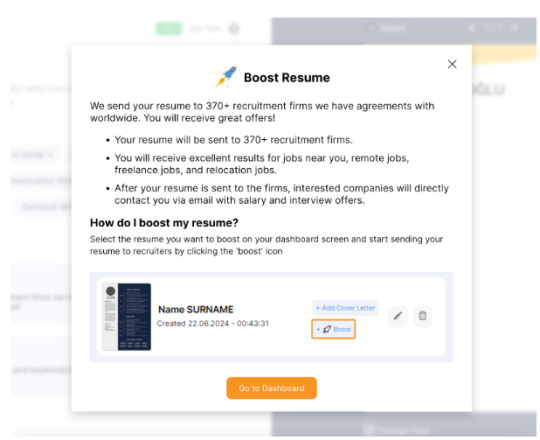#How to automate LinkedIn
Explore tagged Tumblr posts
Text
Sociocosmos: Your Gateway to Authentic LinkedIn Growth
Are you tired of the endless grind of building a strong LinkedIn presence? Sociocosmos offers a unique solution to help you elevate your professional network effortlessly.
Why Choose Sociocosmos?
Authentic LinkedIn Profiles: Buy high-quality, real LinkedIn profiles that align with your industry and target audience.
Targeted Connections: Expand your network with genuine connections to industry influencers, potential clients, and like-minded professionals.
Enhanced Credibility: Boost your professional credibility and establish yourself as an expert in your field.
Increased Visibility: Get noticed by recruiters, hiring managers, and business opportunities.
Time-Saving Solution: Save valuable time and effort by outsourcing the tedious task of building a strong LinkedIn presence.
How It Works:
Select Your Package: Choose from a variety of packages tailored to your specific needs.
Provide Your Requirements: Share your industry, target audience, and desired connection goals.
Experience the Magic: Our team of experts will curate authentic LinkedIn profiles and connections to elevate your professional network.
Elevate Your LinkedIn Presence Today
Don’t let a weak LinkedIn presence hinder your career growth. Join the Sociocosmos community and unlock the power of authentic connections.
#LinkedIn growth#LinkedIn marketing#LinkedIn profile#LinkedIn connections#LinkedIn automation#LinkedIn bot#LinkedIn scraper#LinkedIn lead generation#LinkedIn sales#LinkedIn networking#Buy LinkedIn profiles#Authentic LinkedIn profiles#Real LinkedIn connections#LinkedIn profile builder#LinkedIn profile optimization#LinkedIn profile views#LinkedIn profile impressions#LinkedIn engagement#LinkedIn algorithm#LinkedIn best practices#Long-Tail Keywords:#How to grow your LinkedIn network#How to get more LinkedIn connections#How to improve your LinkedIn profile#How to use LinkedIn for business#How to automate LinkedIn#How to scrape LinkedIn#How to generate leads on LinkedIn#How to sell on LinkedIn#How to network on LinkedIn
0 notes
Text
Entering my LinkedIn whore era. Unfortunately.
#what does the owl say#did u know there are linkedin automation tools#anyway you can tell how out of this world job hunting is in this day and age
7 notes
·
View notes
Text
Signs You Have Overstaffed Your Small Business - Technology Org
New Post has been published on https://thedigitalinsider.com/signs-you-have-overstaffed-your-small-business-technology-org/
Signs You Have Overstaffed Your Small Business - Technology Org
Managing a small business is daunting, and especially when you are wasting resources at places where you could save money, running a small business could become way more difficult. Often during seasonal spikes or when enterprises are swamped with projects, they hire people to manage core project responsibilities. However, as soon as things return to usual, overstaffing can be a massive problem for small businesses. Companies resort to layoffs to save their budget, which costs them reputation, but fortunately, with forecasting, cross-training, allocation, scheduling, and resource management software you can handle overstaffing before it’s too late.
Want to know if your small business is overstaffed? Here are some tale-telling signs!
Business relations. Associative photo by Luis Villasmil via Unsplash, free license
#1 Unwanted Time Off:
If someone in your team feels they aren’t needed at work, they might start taking unwanted time off. Burnouts happen when people have more than they can manage. However, when people don’t have enough work on their plate, it is called “boreout”, and this happens when people feel disconnected from work as they don’t have much to work on.
#2 Idle Employees Even During Peak Hours
You can observe your employees, and if you see employees scrolling their phones or sitting idle during peak hours because they have completed their work, it is a clear sign of overstaffing. If your business experiences consistent periods of low activity despite adequate staffing levels, it may be time to reassess your workforce allocation with an allocation software or check for overstaffing.
#3 High Labor Costs Relative to Revenue
This is the thumb rule for finding out if your company is overstaffed. Compare your labor costs to revenue if you want to establish a metric or evaluate staffing efficiency. If in any way, your labor costs outweigh the revenue growth or remain disproportionately high, it means that you may have more employees than what you require for current operational needs.
#4 Declining Profit Margins
Are you noticing thinning profit margins despite steady or increasing revenue? If the answer is yes, it’s a red flag for overstaffing. If your business profitability is shrinking exponentially despite generating enough revenue, the culprit behind this might be excess staffing costs.
#5 Employee Underutilization
Sometimes organizations don’t notice how much of their human resources are underutilized. Employee underutilization can manifest as a lack of motivation, or employees completing tasks way below their skill level. Try to leverage allocation software and identify underutilized staff members for analyzing if your business is overstaffed.
#6 More Complex Management
If you think executives in administrative or managerial positions find it difficult to coordinate and supervise tasks only when there’s a lot on deck, you are mistaken. Allocating tasks among a large workforce is also overwhelming, and this is a clear sign of overstaffing. Excessive layers of management or overlapping roles can impede the decision-making process and hinder operational agility, which clearly is an indication of overstaffing.
#7 Not Meeting Productivity Goals
When your staff is constantly bored and unmotivated, they don’t work to help the organization achieve its core objectives; they work for the payday. If your business isn’t swamped with work, and you are still missing deadlines, not getting the quality of work you require, and not achieving the productivity goal you have, the real reason might be overstaffing.
#8 Less Overtime
There’s no denying that occasional overtime is necessary during peak periods, but if you notice a consistent reduction in overtime hours, this could indicate surplus staffing. If your business rarely requires additional hours beyond regular shifts, this means you have more employees than needed.
#9 Increased Employee Turnover
High employee turnover rates can be symptomatic of overstaffing, as disengaged or underutilized employees may seek opportunities elsewhere. If you have to constantly recruit and train new personnel, this means you are overstaffed, and this doesn’t just incur additional costs, it also disrupts the workflow and morale.
#10 Inefficient Workflow
Notice any bottlenecks, delays, or redundancies in your workforce? Well, when there are more employees than necessary for a given task, coordination challenges and inefficiencies often arise, and this impedes productivity and quality.
Conclusion
Employees are crucial assets for every organization, and we agree that having employees with the right talents and at the right hierarchy is imperative to have a productive and efficient workforce that contributes to your organization’s success. However, being overstaffed is not the solution. When your company is overstaffed, it ends up paying more wages than necessary, staff members become underutilized, productivity decreases, employee morale suffers, and people feel disengaged.
Instead of scrambling with this issue on the frontlines, enterprises can always invest in enterprise workforce management software like eResource Scheduler that keeps track of who’s working on what, how many resources you have; when they are available, and what more resources you need to hire. Having allocation software isn’t an alternative; it’s a mandate because instead of flying blind, having automation on deck helps you avoid overstaffing and maximize efficiency with the limited resources you have in your team.
References:
https://palmettopayroll.net/10-signs-youve-overstaffed-your-small-business/
https://joinhomebase.com/blog/are-you-overstaffing/
https://www.linkedin.com/pulse/seven-ways-determine-your-company-overstaffed-terry-thomas-mba-cpa/
https://www.shiftbase.com/glossary/overstaffing
https://www.linkedin.com/pulse/overstaffing-can-break-your-small-business-heres-how-know-mclellan/
https://factorialhr.com/blog/understaffing-overstaffing-guide/
#assets#automation#Blog#Business#Companies#efficiency#employees#enterprise#executives#Fintech news#glossary#growth#how#human#human resources#it#layoffs#LESS#LinkedIn#management#manifest#Margins#members#money#Motivation#organization#organizations#Other posts#phones#photo
0 notes
Text
How I Got Multiple Remote Job Offers Without Relying on Job Boards
Hey everyone,
Just wanted to share my experience in case anyone else is struggling with remote job hunting. A few months ago, I was frustrated. I kept applying, but nothing worked. No offers, barely any interviews.
So I changed my approach, and it actually worked.
A bit about me
I’m a software engineer. I’ve been working full-time for years, and a few months ago, I started looking for a part-time remote job. At first, it was casual, but due to personal stuff, it became more urgent.
Like many people, I started with LinkedIn and even paid for Premium. I applied to many jobs, got a few interviews, but no solid results. After five months, I felt stuck and knew I needed a different method.
Step 1: Europe - Google Maps + Manual Outreach
I searched for recruitment agencies in Europe using Google Maps. I zoomed into countries like the UK, Germany, and the Netherlands and typed "recruitment." Tons of agencies popped up, and many had websites with resume upload options.
I created an Excel list of over 450 agencies across Europe and sent my resume to each of them. It took two days, but it worked.
I also prepared two versions of my resume, one with a photo for Europe and one without for the US and Canada.
Step 2: US and Canada - Resume Tool
For companies in the US and Canada, I used this tool that helps you build a professional resume and send it to hundreds of companies at once. It targets both HR departments and recruitment firms.

I sent my no-photo resume to over 370 companies in a single click. The tool also gave me tips for writing each section, which made the whole process easier. Rabbit Resume Builder also includes an ATS-Hack feature. This tool embeds relevant but invisible keywords into your resume, helping it pass automated filters without affecting the layout or readability. The result is a resume optimized for both ATS systems and human reviewers.

The Results
Soon after, I started getting responses. I had interviews and received four job offers. I accepted two remote part-time jobs. One is three hours a day, the other is two.
I also kept my full-time job. At first, managing everything was tough, but I found a rhythm. Now, I have more income and more stability.
Source: https://www.reddit.com/r/RemoteJobseekers/comments/1fdpeg2/how_i_landed_multiple_remote_job_offers_my_remote/
144 notes
·
View notes
Text
Automated Physiognomy @quasi-normalcy @socialistexan
A new study by researchers from four universities claims artificial intelligence (AI) models can predict career and educational success from a single image of a person’s face.
The researchers from Ivy League schools and others used photos from LinkedIn and photo directories of several top US MBA programs to determine what is called the Big Five personality traits for 96,000 graduates. It then compared those personality traits to employment outcomes and education histories of the graduates to determine correlation between the personality and success.
The findings highlight the significant impact AI could have as it shapes hiring practices. Employers and job seekers are increasingly turning to generative AI (genAI) to to automate their search tasks, whether it’s creating a shortlist of candidates for a position or writing a cover letter and resume. And data shows applicants can use AI to improve the chances of getting a particular job or a company finding the perfect talent match.
132 notes
·
View notes
Text
the sheer disappointment i felt yesterday when I saw another artist i used to talk to and try and help with their portfolio and resume turn around and become a ai slop creator, turning their entire instagram, linkedin, bluesky, etc into a neverending stream of ai products and seo nightmare optimization was heartbreaking, ESPECIALLY since their art before they fell into the ai rabbithole was GOOD.
genuinely, it was so bad that my friend's and i thought it had been hacked. thats how automated and 'fake' it felt. like when someone's blog is hacked and turned into a endless stream of reblogging fake products.
they were a good 3d artist, and if they had simply honed their skill and worked on building their portfolio, I think they would have eventually found themselves a job.
on top of that, they'd also done the thing on linkedin that you see sometimes where they say they 'worked' at twitter simply by having a twitter account. they had over FIFTY entries spanning more years than they've been alive. what solidified it for me is that they were linking videos on how to make 100k a year 'get rich quick' schemes and its just...
its so disappointing to see someone fall of the wagon that hard for literally no reason.
#personal tag#if somehow they come across this please know I do not hate you for this#i get how someone could fall into it#how views and notes and instant gratification are intoxicating#but you were better than that
136 notes
·
View notes
Text
economic advice and timely buying tips: 2025 transits
as of late, social media has many discussions about what to buy - or avoid buying - over the next few years, largely in response to the political climate in the united states. across europe, many regions are actively preparing their populations for potential crises (sweden's seems to be the most popularly discussed - link). due to the urgency and pressure to act, as if the world might change tomorrow (and it could though i believe we still have time in many places), i’ve decided to analyze the astrological transits for 2025. in this post i provide practical economic advice and guidance on how much time astrology suggests you have to make these purchases everyone is urging you to prioritize. if it seems to intrigue people i’ll explore future years as well.
things the world needs to prepare for in 2025 in my opinion and why my advice is what it is: the rise of ai / automation of jobs, job loss, geopolitical tensions, war, extreme weather, inflation, tariffs - a potential trade war, a movement of using digital currency, the outbreak of another illness, etc.
paid reading options: astrology menu & cartomancy menu
enjoy my work? help me continue creating by tipping on ko-fi or paypal. your support keeps the magic alive!

uranus goes direct in taurus (jan 30, 2025)
advice
diversify investments: avoid putting all your money in one asset type. mix stocks, bonds, index funds, and, if you feel comfortable, look into sustainable investments or new technologies.
digital finance: familiarize yourself with digital currencies/platforms or blockchain technology.
build an emergency fund: extra savings can shield you from sudden economic instability. aim for 3-6 months’ worth of expenses.
reevaluate subscriptions and spending: find creative ways to reduce spending or repurpose what you have. cancel subscriptions that don't align with needs/beliefs, cook at home, or diy where possible.
invest in skills / side hustles: take a course/invest in tools that can help you create multiple income streams.
by this date stock up on
non-perishable food items like canned goods, grains, and dried beans. household essentials like soap, toothpaste, and cleaning supplies. basic medical supplies. multi-tools. durable, high-quality items over disposable ones (the economy is changing, buy something that will last because prices will go up). LED bulbs, solar-powered chargers, or energy-efficient appliances. stock up on sustainable products, like reusable bags and water bottles. blankets. teas. quality skincare.
jupiter goes direct in gemini (feb 4, 2025)
advice
invest in knowledge: take courses, buy books (potential bans?), and/or attend workshops to expand your skill set. focus on topics like communication, writing, marketing, and/or technology. online certifications could boost your career prospects during this time.
leverage your network: attending professional events, joining forums, and/or expanding your LinkedIn presence.
diversify income streams: explore side hustles, freelance gigs, and/or monetize hobbies.
beware of overspending on small pleasures: overspending on gadgets, books, or entertainment will not be good at this point in time (tariffs already heavy hitting?).
by this date stock up on
books / journals. subscriptions to learning platforms like Skillshare, MasterClass, or Coursera. good-quality laptop, smartphone, and/or noise-canceling headphones. travel bags - get your bug out bag in order. portable chargers. language-learning apps. professional attire. teas. aromatherapy.
neptune enters aries (march 30, 2025)
advice
invest: look into industries poised for breakthrough developments, such as renewable energy, space exploration, and/or tech.
save for risks: build a financial cushion to balance your adventurous pursuits with practical security.
diversify your income: consider side hustles or freelancing in fields aligned with your passions and talents.
"scam likely": avoid “get-rich-quick” schemes or ventures that seem too good to be true.
adopt sustainable habits: focus on sustainability in your spending, like buying high-quality, long-lasting items instead of cheap, disposable ones.
by this date stock up on
emergency kits with essentials like water, food, and first-aid supplies. multi-tools, solar chargers, or portable power banks. art supplies. tarot or astrology books (bans?). workout gear, resistance bands, or weights. nutritional supplements. high-quality clothing or shoes.
saturn conjunct nn in pisces (april 14, 2025)
advice
save for the long term: create a savings plan or revisit your budget to ensure stability.
avoid escapism spending: avoid unnecessary debt.
watch for financial scams: be cautious with contracts, investments, or loans. research thoroughly and avoid “too good to be true” offers.
focus on debt management: saturn demands accountability. work toward paying down debts to free yourself from unnecessary burdens.
build a career plan: seek roles / opportunities that balance financial security with fulfillment, such as careers in wellness, education, creative arts, or nonprofits.
by this date stock up on
invest in durable, sustainable items for your home or wardrobe that offer long-term value. vitamins or supplements. herbal teas or whole grains. blankets. candles. non-perishable food. first-aid kits. water. energy-efficient devices.
pluto rx in aquarius (may 4, 2025 - oct 13, 2025)
advice
preform an audit: reflect on how your money habits and your long-term goals.
make sustainable investments: support industries tied to innovation, like renewable energy, ethical tech, or sustainable goods.
expect changes: could disrupt collective systems, so build an emergency fund. plan for potential shifts in tech-based industries or automation. AI is going to take over the workforce...
reevaluate subscriptions and digital spending: cut unnecessary costs and ensure your money supports productivity. netflix is not necessary, your groceries are.
diversify income streams: brainstorm side hustles or entrepreneurial ideas.
by this date stock up on
external hard drives. cybersecurity software. portable chargers. solar panels. energy-efficient gadgets. non-perishable food. clean water supplies. basic first-aid kits and medications. portable generators. books on technology and coding. reusable items like water bottles, bags, and food storage. gardening supplies to grow your own food. VPN subscriptions or identity theft protection.
saturn enters aries (may 24, 2025)
advice
prioritize self-reliance: build financial independence. create a budget, eliminate debt, and establish a safety net to support personal ambitions. avoid over-reliance on others for financial stability/decision-making.
entrepreneurship: consider starting a side hustle / investing in yourself.
save for big goals: plan for major life changes, such as buying property, starting a business, etc. make a high yield saving account for these long-term goals.
by this date stock up on
ergonomic office equipment. home gym equipment. non-perishable foods and water supplies for potential unexpected disruptions. self-protection; consider basic tools or training for safety. high-protein snacks, energy bars, or hydration supplies. supplements like magnesium, B-complex vitamins, etc. stock up on materials for DIY projects, hobbies, or entrepreneurial ventures.
jupiter enters cancer (june 9, 2025)
advice
invest in your home: renovating what needs renovating. saving for a down payment on a house.
focus on security: start or increase your emergency savings. consider life insurance or estate planning to ensure long-term security for your family/loved ones.
embrace conservative financial growth: cancer prefers security over risk. opt for conservative investments, like bonds, real estate, and/or mutual funds with steady returns.
focus on food and comfort: spend wisely on food, cooking tools, or skills that promote a healthier, more fulfilling lifestyle (maybe this an RFK thing for my fellow american readers or this could be about the fast food industry suffering from inflation).
by this date stock up on
furniture upgrades if you need them. high-quality cookware or tools. stockpile your pantry staples. first-aid kits, fire extinguishers, and home security systems. water and canned goods for emergencies. paint, tools, or materials for DIY projects. energy-efficient appliances or upgrades to reduce utility costs.
neptune rx in aries/pisces (july 4, 2025 - dec 10, 2025)
advice
avoid financial conflicts: be mindful of shared finances or joint ventures during this time.
avoid escapist spending: stick to a budget.
by this date stock up on
first-aid kits, tools, and essentials for unforeseen events. water filter / waterproof containers. non-perishables and emergency water supplies.
uranus rx in gemini/taurus (july 7, 2025 - feb 3, 2026)
advice
evaluate technology investments: make sure you’re spending money wisely on tech tools, gadgets, or subscriptions. avoid impulsively purchasing the latest gadgets; instead, upgrade only what’s necessary.
diversify streams of income: explore side hustles or gig work to expand your income sources. focus on digital platforms or innovative fields for additional opportunities.
reassess contracts and agreements: take time to revisit financial contracts or business partnerships. ensure all terms are clear and aligned with your goals.
prioritize financial stability: uranus often brings surprises, so focus on strengthening your savings and emergency fund.
avoid major financial risks: uranus retrograde can disrupt markets. avoid speculative ventures and focus on stable, low-risk options.
by this date stock up on
lightweight travel gear or items for local trips. radios, power banks, or portable hotspots in case of disruptions in digital connectivity. stockpile food, water, and household goods to maintain stability during potential disruptions. invest in high-quality, long-lasting items like tools, clothing, or cookware.
saturn rx in aries/pisces (july 13, 2025 - nov 27, 2025)
advice
review career: assess whether your current job or entrepreneurial efforts align with your long-term aspirations (especially considering the state of the world). adjust plans if needed.
strengthen emergency funds: aries energy thrives on readiness. use this time to build/bolster a financial safety net for unforeseen events.
prepare for uncertainty: build a cushion for unexpected financial changes, especially if you work in creative, spiritual, or service-oriented fields.
by this date stock up on
health products that support long-term well-being. essential supplies like first-aid kits, multi-tools, or non-perishables. bath products. teas. art supplies. drinking water or water filtration tools.
jupiter rx in cancer (nov 11, 2025 - march 10, 2026)
advice
strengthen financial foundations: building an emergency fund or reassessing your savings strategy. ensure everything is well-organized and sustainable.
by this date stock up on
quality kitchenware, tools, or cleaning supplies. pantry staples and emergency food supplies.
have ideas for new content? please use my “suggest a post topic” button!
return to nox's guide to metaphysics
return to the masterlist of transits
© a-d-nox 2024 all rights reserved
#astrology#astro community#astro placements#astro chart#astrology tumblr#astro notes#astrology chart#astrology readings#astro#astrology signs#astro observations#astroblr#astrology blog#astrology stuff#natal astrology#transit astrology#transit chart#astrology transits
104 notes
·
View notes
Text
The Painted Lady

Air Bison, Sea Bison, and now Sludge Bison.
I have no idea how Aang is swimming through a solid. Must be an Avatar thing.

I bet there would be time for more potty breaks if Sokka hadn't spent 100+ hours of their time drawing up the schedule. A very Sokka thing to do though.
Because hills often have horns. Great disguise.
You can't tell me that a factory that close to their town wouldn't also become the town's primary employer.

That is a lot of town.
I sense a return of preachy Katara. This episode is going to suck.
I'm with Sokka on this one. Buy fish, move on, defeat Firelord, return to help with environmental remediation if time permits.
I like Doc. And Shu. Nice people.
Writers: if you have to make one of your characters an entirely different person to set up the episode's lesson of the week, maybe the lesson doesn't fit your chosen characters. This is the Warriors of Kyoshi all over again. Funny how that's happened to Sokka twice.

We are all Sokka.
And where exactly did this mysterious painted lady get the food to deliver to the village, if the reason the Gaang stopped in the village in the first place was because they needed food?
Let the record show: I lost the last of my patience with this episode 8 minutes and 9 seconds in.

Waterbending healing has never thrown off that much light before. Even the spirit oasis water wasn't that bright.
Also where is the water she's healing with? Usually she has a big bubble of it.
Impersonating a religious figure. That won't end badly.
"Well I hope she returns every night otherwise this place would go right back to the way it was." YES!!!!!! THAT'S THE POINT!!!!!
What was Katara's plan? Forget about the eclipse, forget about fighting the Fire Lord, we're going to stay here for the rest of our lives so that the painted lady can put in a nightly appearance. THIS IS WHY SOKKA DOES THE PLANNING.
Spirit magic is more doing the worm than doing the wave. Good to know.
Bold of a kids' show to advocate for ecoterrorism.
Aang's like "Hey spirit lady! Here's my resume! Here's my connections on LinkedIn!" Why did Katara think that faking being a spirit within two feet of the bridge to the spirit world would be consequence free? Actually that presupposes that Katara thought. Which she didn't. Sokka does her thinking.
"I don't get to meet many spirits. But the ones I do meet, not very attractive." I am OFFENDED on Yue's behalf. And Sokka's. I guess Aang doesn't like Water Tribe girls after all.
"I guess I just became her." No. That's an excuse and a deflection. I don't want to hear it.
What was I saying about Aang and Katara enabling each others' bad tendencies?
Sokka is horribly out of character this episode, but Aang is as well. In what universe would Aang be so unbothered by Appa being sick, and then so unbothered by the reveal that Katara had been faking Appa being sick? Like, this is Appa. He nearly skinned a bunch of sandbenders over the guy. And he finds out Katara's been messing with him and calls her 'great' and 'a secret hero.'
So this factory, despite being operational 24/7, has no night staff, not even a night guard? Because if it does (which it absolutely does - automation is a problem for factories in our world, not the ATLA one), Katara and Aang just killed A LOT of people.
And so she follows up one short term solution with another short term solution, which causes a third problem she will no doubt solve with a short term solution. You think there won't be reprisals for the only obvious suspects to this industrial sabotage? You think they won't rebuild the factory?
Sokka was kidding when he said that the Spirit Lady had better blow up the factory, but not in the way Katara thought he was kidding. Katara thought he wasn't being serious. But Sokka was serious, in that blowing up the factory is as short term a solution as appearing every night. He thought the joke - exchanging one bad solution for another - was obvious.

Somebody's enjoying himself a little too much.

Unfortunately, serving as Exhibit A is the most Toph has had to do all episode.

It is cathartic to see someone finally call Katara on her nonsense. But I'll bet everything I own that the narrative is going to side with her anyway.

Welp. I won that bet.
"You need me." Correct! Katara unsupervised needs bailing out after five minutes. "And I will never turn my back on you." A much more realistic goal than never turning your back on anyone who needs you, and also Sokka summarised in one sentence. Impressive for an episode where they had to Flanderise him beyond recognition to make Katara somehow the good guy.
Oh for fuck's sake. It's not about having a heart. This late in the game it's pure damage control.
So that's where the Painted Lady's food came from. I guess Fire Nation factories count as pirates?
I like the jetskis. The seem far more stable than actual jetskis.

It never occurred to Katara to obscure the evidence even a little bit? At least rub some dirt on the emblem. Look at me assuming Katara has thoughts.
Actual reprisals for once. About time.

This kid is annoying.

Toph gets to be a haunted house sound effects machine.

That's awfully waterbendery for a Fire Nation spirit.

I don't buy for a minute that anyone would be able to stay perfectly upright and balanced after an air blast from below without extensive trampoline training.

This won't work. His superiors, or the next shift change, or the first recruit wanting to climb the ranks quickly, will rise to the challenge presented here by the "painted lady." And as soon as one FN attack goes unchallenged by the "painted lady," the village is toast. I give them a week, tops.
Kudos to some clever in-universe bending special effects. Doesn't save the episode though.
Katara's preachy speech here makes absolutely no sense in light of the rest of the episode. Scolding them for not saving themselves, when waiting around for someone to save them appears to have worked perfectly? And having little miss I-must-save-the-whole-world-on-a-weekly-basis-otherwise-my-sense-of-self-implodes deliver that scold?
Who are these people wearing the Gaang's skin?
Yeah, nothing screams undercover in enemy territory like an entire village knowing that you're a waterbender. Good thing the only competent tracker in the Fire Nation is Zuko, otherwise these kids will absolutely be dead long before the eclipse.

Hi Bushi! You're about the only part of this episode that doesn't drive me nuts!

At least the animators had fun with this one.


Is this guy mopping the river?
Exactly how many days did they take out of Sokka's schedule to restore the ecosystem? I don't care how overlevelled these kids are at bending, you cannot mechanically separate an entire river's worth of dirt from water in an afternoon.

Well that's just he piss icing on the shit cake, isn't it? It wasn't enough for Sokka to lose all reason and come around to Katara's very flawed way of thinking, it wasn't enough for Aang to call her a hero, it wasn't enough to have a village worshipping at her feet, Katara needs affirmations of how right and special and correct and perfect and morally justified she is from the spirit world itself. This is Mary Sue stuff.
Final Thoughts
This is the first time an episode of Avatar has felt like a waste of my time.
It's also the first time I've felt like an episode has gone out of its way to insult the audience.
Katara talking about how she knows what she's doing is wrong is worth absolutely nothing when a) she goes right back to doing it; and b) literally every other part of this episode trips over itself to assure Katara that she's in the right.
Katara is downright punchable this episode. Sokka is Flanderised; Toph is non-existent; Aang is just there; poor Appa is an unwitting accessory to crime; and Momo has as much impact as a housefly.
So the execs forgot about the existence of The Spirit World Part One and demanded a save the environment special episode. The writers responded by forgetting that they'd already established that Katara was ride or die for literally anyone with a pulse in Imprisoned, and gave us this to remind us of that fact. They also forgot that they'd already established that Katara has no moral code whatsoever the minute her personal interest is involved in The Waterbending Scroll, so they decided to recycle the "narrative sides with Katara endangering them all over Sokka being reasonable" plot from that episode and hope we wouldn't notice. We did.
At least with Imprisoned, Katara kind of sort of caused the problem that she fixed. She was super tangentially involved in that kid's arrest. Here, she causes problems by trying to fix problems that she didn't really have any business getting involved in.
The more of this I watched, the more I wanted someone to slap Katara. What I wouldn't give for an episode where she is wrong (has happened a lot) and the episode doesn't pretend otherwise (has never happened). For god's sake, LET HER BE WRONG AND FEEL IT. How else is she going to progress past being self-righteously fourteen? Why is she being so consistently insulated from consequences? Aang chooses power over family at the end of season two and gets actually murdered for it. Katara steals, lies, skirts dangerously close to being a false prophet and does a nifty little ecoterrorism (with Aang's help), and she gets villagers being a bit shouty before big brother comes in and fixes it. Then she gets divine sanction for her actions so even the shouty bit is negated.
There's an interesting contrast in Katara's "I will never turn my back on people who need me" and Sokka's "I will never turn my back on you." It shows which of the two doesn't have their head in the clouds, and has actually formulated realistic expectations of how much a single person can do. It also speaks to the fundamental difference in how they operate. Katara acts; Sokka mitigates. Sokka does Katara's thinking for her; Katara outsources her thinking and then gets pissed when rational thoughts don't conform to her emotions' view of the world.
Why haven't the villagers moved away? If the water was poisoning them this much, why are they still here? Was the early 2000s too early to have a theme of climate refugees? Or the pollution equivalent? That would have been more interesting than this.
I hated this. Why isn't this the episode that gets hated on like the Great Divide? Its sins are nothing compared to this.
Doc, Shu, and Bushi were the only good thing in this episode, but they weren't enough to make this one remotely rewatchable.
One out of Three so far on season three episode quality. No other season has had this bad a ratio this early. This does not bode well for the rest of this season.
120 notes
·
View notes
Text
On February 10, employees at the Department of Housing and Urban Development (HUD) received an email asking them to list every contract at the bureau and note whether or not it was “critical” to the agency, as well as whether it contained any DEI components. This email was signed by Scott Langmack, who identified himself as a senior adviser to the so-called Department of Government Efficiency (DOGE). Langmack, according to his LinkedIn, already has another job: He’s the chief operating officer of Kukun, a property technology company that is, according to its website, “on a long-term mission to aggregate the hardest to find data.”
As is the case with other DOGE operatives—Tom Krause, for example, is performing the duties of the fiscal assistant secretary at the Treasury while holding down a day job as a software CEO at a company with millions in contracts with the Treasury—this could potentially create a conflict of interest, especially given a specific aspect of his role: According to sources and government documents reviewed by WIRED, Langmack has application-level access to some of the most critical and sensitive systems inside HUD, one of which contains records mapping billions of dollars in expenditures.
Another DOGE operative WIRED has identified is Michael Mirski, who works for TCC Management, a Michigan-based company that owns and operates mobile home parks across the US, and graduated from the Wharton School in 2014. (In a story he wrote for the school’s website, he asserted that the most important thing he learned there was to “Develop the infrastructure to collect data.”) According to the documents, he has write privileges on—meaning he can input overall changes to—a system that controls who has access to HUD systems.
Between them, records reviewed by WIRED show, the DOGE operatives have access to five different HUD systems. According to a HUD source with direct knowledge, this gives the DOGE operatives access to vast troves of data. These range from the individual identities of every single federal public housing voucher holder in the US, along with their financial information, to information on the hospitals, nursing homes, multifamily housing, and senior living facilities that HUD helps finance, as well as data on everything from homelessness rates to environmental and health hazards to federally insured mortgages.
Put together, experts and HUD sources say, all of this could give someone with access unique insight into the US real estate market.
Kukun did not respond to requests for comment about whether Langmack is drawing a salary while working at HUD or how long he will be with the department. A woman who answered the phone at TCC Management headquarters in Michigan but did not identify herself said Mirksi was "on leave until July." In response to a request for comment about Langmack’s access to systems, HUD spokesperson Kasey Lovett said, “DOGE and HUD are working as a team; to insinuate anything else is false. To further illustrate this unified mission, the secretary established a HUD DOGE taskforce.” In response to specific questions about Mirski’s access to systems and background and qualifications, she said, “We have not—and will not—comment on individual personnel. We are focused on serving the American people and working as one team.”
The property technology, or proptech, market covers a wide range of companies offering products and services meant to, for example, automate tenant-landlord interactions, or expedite the home purchasing process. Kukun focuses on helping homeowners and real estate investors assess the return on investment they’d get from renovating their properties and on predictive analytics that model where property values will rise in the future.
Doing this kind of estimation requires the use of what’s called an automated valuation model (AVM), a machine-learning model that predicts the prices or rents of certain properties. In April 2024, Kukun was one of eight companies selected to receive support from REACH, an accelerator run by the venture capital arm of the National Association of Realtors (NAR). Last year NAR agreed to a settlement with Missouri homebuyers, who alleged that realtor fees and certain listing requirements were anticompetitive.
“If you can better predict than others how a certain neighborhood will develop, you can invest in that market,” says Fabian Braesemann, a researcher at the Oxford Internet Institute. Doing so requires data, access to which can make any machine-learning model more accurate and more monetizable. This is the crux of the potential conflict of interest: While it is unclear how Langmack and Mirski are using or interpreting it in their roles at HUD, what is clear is that they have access to a wide range of sensitive data.
According to employees at HUD who spoke to WIRED on the condition of anonymity, there is currently a six-person DOGE team operating within the department. Four members are HUD employees whose tenures predate the current administration and have been assigned to the group; the others are Mirski and Langmack. The records reviewed by WIRED show that Mirski has been given read and write access to three different HUD systems, as well as read-only access to two more, while Langmack has been given read and write access to two of HUD’s core systems.
A positive, from one source’s perspective, is the fact that the DOGE operatives have been given application-level access to the systems, rather than direct access to the databases themselves. In theory, this means that they can only interact with the data through user interfaces, rather than having direct access to the server, which could allow them to execute queries directly on the database or make unrestricted or irreparable changes. However, this source still sees dangers inherent in granting this level of access.
“There are probably a dozen-plus ways that [application-level] read/write access to WASS or LOCCS could be translated into the entire databases being exfiltrated,” they said. There is no specific reason to think that DOGE operatives have inappropriately moved data—but even the possibility cuts against standard security protocols that HUD sources say are typically in place.
LOCCS, or Line of Credit Control System, is the first system to which both DOGE operatives within HUD, according to the records reviewed by WIRED, have both read and write access. Essentially HUD’s banking system, LOCCS “handles disbursement and cash management for the majority of HUD grant programs,” according to a user guide. Billions of dollars flow through the system every year, funding everything from public housing to disaster relief—such as rebuilding from the recent LA wildfires—to food security programs and rent payments.
The current balance in the LOCCS system, according to a record reviewed by WIRED, is over $100 billion—money Congress has approved for HUD projects but which has yet to be drawn down. Much of this money has been earmarked to cover disaster assistance and community development work, a source at the agency says.
Normally, those who have access to LOCCS require additional processing and approvals to access the system, and most only have “read” access, department employees say.
“Read/write is used for executing contracts and grants on the LOCCS side,” says one person. “It normally has strict banking procedures around doing anything with funds. For instance, you usually need at least two people to approve any decisions—same as you would with bank tellers in a physical bank.”
The second system to which documents indicate both DOGE operatives at HUD have both read and write access is the HUD Central Accounting and Program System (HUDCAPS), an “integrated management system for Section 8 programs under the jurisdiction of the Office of Public and Indian Housing,” according to HUD. (Section 8 is a federal program administered through local housing agencies that provides rental assistance, in the form of vouchers, to millions of lower-income families.) This system was a precursor to LOCCS and is currently being phased out, but it is still being used to process the payment of housing vouchers and contains huge amounts of personal information.
There are currently 2.3 million families in receipt of housing vouchers in the US, according to HUD’s own data, but the HUDCAPS database contains information on significantly more individuals because historical data is retained, says a source familiar with the system. People applying for HUD programs like housing vouchers have to submit sensitive personal information, including medical records and personal narratives.
“People entrust these stories to HUD,” the source says. “It’s not data in these systems, it’s operational trust.”
WASS, or the Web Access Security Subsystem, is the third system to which DOGE has both read and write access, though only Mirski has access to this system according to documents reviewed by WIRED. It’s used to grant permissions to other HUD systems. “Most of the functionality in WASS consists of looking up information stored in various tables to tell the security subsystem who you are, where you can go, and what you can do when you get there,” a user manual says.
“WASS is an application for provisioning rights to most if not all other HUD systems,” says a HUD source familiar with the systems who is shocked by Mirski’s level of access, because normally HUD employees don’t have read access, let alone write access. “WASS is the system for setting permissions for all of the other systems.”
In addition to these three systems, documents show that Mirski has read-only access to two others. One, the Integrated Disbursement and Information System (IDIS), is a nationwide database that tracks all HUD programs underway across the country. (“IDIS has confidential data about hidden locations of domestic violence shelters,” a HUD source says, “so even read access in there is horrible.”) The other is the Financial Assessment of Public Housing (FASS-PH), a database designed to “measure the financial condition of public housing agencies and assess their ability to provide safe and decent housing,” according to HUD’s website.
All of this is significant because, in addition to the potential for privacy violations, knowing what is in the records, or even having access to them, presents a serious potential conflict of interest.
“There are often bids to contract any development projects,” says Erin McElroy, an assistant professor at the University of Washington. “I can imagine having insider information definitely benefiting the private market, or those who will move back into the private market,” she alleges.
HUD has an oversight role in the mobile home space, the area on which TCC Management, which appears to have recently wiped its website, focuses. "It’s been a growing area of HUD’s work and focus over the past few decades," says one source there; this includes setting building standards, inspecting factories, and taking in complaints. This presents another potential conflict of interest.
Braesemann says it’s not just the insider access to information and data that could be a potential problem, but that people coming from the private sector may not understand the point of HUD programs. Something like Section 8 housing, he notes, could be perceived as not working in alignment with market forces—“Because there might be higher real estate value, these people should be displaced and go somewhere else”—even though its purpose is specifically to buffer against the market.
Like other government agencies, HUD is facing mass purges of its workforce. NPR has reported that 84 percent of the staff of the Office of Community Planning and Development, which supports homeless people, faces termination, while the president of a union representing HUD workers has estimated that up to half the workforce could be cut The chapter on housing policy in Project 2025—the right-wing playbook to remake the federal government that the Trump administration appears to be following—outlines plans to massively scale back HUD programs like public housing, housing assistance vouchers, and first-time home buyer assistance.
16 notes
·
View notes
Text
how do you remove your dead dad from linked in.
it's annoying enough to get automated posts from facebook but i understand why my step mom wants to keep it open.
but linkedin updates about the job he never managed to retire from?? no thank you.
35 notes
·
View notes
Text
living in the moment ft. my dad
I have always had my head in the clouds, a little bit? I have spent my entire life lost in stories. It started with those magazines they have for kids. Champak, Magic Pot, Tinkle. Then it moved to novels for kids. Secret Seven, Famous Five, anything Enid Blyton really. Then Fantasy. Percy Jackson, Harry Potter, Artemis Fowl. Then as we grew older, the classics. Pride and Prejudice, Oliver Twist, Black Beauty. I was the kid who always had his nose in a book. In our substitute periods, my friends would be calling my name and I simply wouldn't hear them because that's how engrossed I was. I would be walking down the stairs with my head in a book and people would warn me that I am going to fall, and I would tell them (with a bit of pretentious snobbiness, I have to admit) that I had been doing this shit since I was 6.
Then came college, and like a lot of people I shifted to shows and movies. How I met your mother, Parks and Recreation, New girl. The same thing happened. My eyes were now always glued to my phone screen. I watched with so much concentration and watched the same things so many times I ended up memorising entire 9 season long shows. I started narrating movies dialogue-by-dialogue in front of my friends.
My dad didn't help either. He had to see every movie that came out. If too many movies came out in a month, he would bring pirated CDs for 50 rupees each and we would watch them on our tv. He would randomly come in his car in the evenings when me and my brother would be playing with our friends, roll down his windows, and say "Get in the car, we are going to the theater." Our friends would watch with childish jealousy as we just randomly up and went to see a movie. We wouldn't even check what was in the theaters that week. We would just get there and sit for whatever was starting in the next 15 minutes. I have seen so many sequels without watching the original?
Somewhere in all of this, I think I lost some sense of reality. I would be writing novels in my head. And no, not just outlines. I would be sitting on the dining table, writing them in my head sentence-by-sentence as I ate my food, mouthing dialogues that my characters would speak in the way they would speak them and not realise what I was doing until my brother pointed it out. That must have been creepy for him, to say the least. Suddenly I am 23 and life is more complicated than in any book, show, or movie I had ever read or seen. People on LinkedIn talking about the best investments and wanting to build careers and customer service strategies and I find it so hard to care sometimes??
Why can't I just be happy that my friend Hagrid has come back from Azkaban where he was wrongfully imprisoned for being the heir of Slytherin and that Gryffindor has won the house cup again? But noooo, I have to make excel sheets, and powerpoint presentations, and think of the best way to automate our processes. The real world is so, so boring.
My dad, somehow though, lives in both these worlds. He still watches every hindi movie and show that comes out. But never gets too attached. He really just watches them for simple entertainment and then doesn't get obsessed??? what a maniac?? He doesn't even remember plots of movies he saw two weeks back. And I remember movies I saw when I was 15 like I saw them yesterday. Whenever we talk, I want to talk about astronomy, and philosophy. About how tiny and insignificant we are in space and time, about thought experiments. And he never has anything to say about any of those things. He just nods and listens. "I don't really think about this stuff," he says. He has experienced way more stories than I have, and yet his head stays on the ground. If it's not something that affects him here and now, in the real world, he doesn't wanna hear about it. Who cares if wormholes can exist or not, when it's not affecting his life in any way?
And like, I get it. Life already throws so many things in your way; why add to it, right? He keeps his head clear, focuses only on the present, and on what is directly in front of him. A simple man. And on some level, I admire that. And I have been trying to be like that. But I don't want to lose my passion for stories, for things like the universe and different theories of ethics.
There's this very young businesswoman and internet personality I admire, and she is a great speaker. She always comes across as very confident and very sure of herself. And she was asked in an event how she deals with any failures or setbacks. And she said that she has learnt to regulate her emotions, so that she doesn't get too happy when something goes her way, and she doesn't get too sad when something doesn't.
Isn't that... kind of sad? It broke my heart, to be honest. I wanna be madly happy when something goes my way, dude. I wanna party and feel like I am on top of the world and that I am invincible. Moderating your emotions sounds like dulling the human experience.
Like always, I don't know what the answer is. But right now I am a little tired of feeling too much, of thinking too much. So I am going to try my dad's approach for a while, and let you know how it goes.
#prose#feelings#inspiration#words#thoughts#poetry#poem#short poem#original poem#poems and poetry#poems and quotes#poems on tumblr#writing#relatable#quotes#spilled ink#literature#life quotes#realtionship quotes#relatable quotes#aesthetic#love#lou ferrigno jr#911 abc#fantasy high#fantasy high junior year#dracula#re: dracula
24 notes
·
View notes
Text
Proven Marketing Tactics for Small Business Success
Marketing is the lifeblood of any enterprise, especially small groups seeking to grow and compete in a crowded market. Without powerful advertising strategies, even the satisfactory products or services can pass overlooked. Unlike huge companies, small companies often operate with restrained budgets and resources. Therefore, they need clever, price-effective, and measurable strategies to advantage visibility and develop step by step.
Best marketing strategies for small business

This article explores numerous marketing techniques that are especially effective for small agencies, combining traditional strategies with modern digital tools.
1. Understand Your Target Audience
The basis of all advertising begins with know-how your clients. Define your target marketplace based totally on:
Demographics: Age, gender, profits stage, education
Geographics: Where they stay or paintings
Psychographics: Lifestyle, pursuits, and values
Behavioral trends: Buying conduct, logo loyalty, product utilization
Creating a purchaser persona enables you tailor your messaging, offers, and channels greater correctly. For instance, in case you're concentrated on university college students, Instagram and TikTok is probably better platforms than electronic mail advertising or print media.
2. Build a Strong Brand Identity
A recognizable and straightforward emblem builds lengthy-time period customer loyalty. Your brand includes:
Logo and design: Consistent shades, fonts, and imagery
Tone of voice: Formal, informal, funny, and so on.
Even a one-man or woman enterprise blessings from sturdy branding. For example, a nearby baker who uses eco-friendly packaging can emblem themselves as “inexperienced” and attract environmentally-conscious customers.
Three. Create a Professional Website
A internet site is your 24/7 digital storefront. It should be:
Mobile-friendly and fast
Easy to navigate
Linked for your social media pages
Equipped with touch paperwork or chat help
Use platforms like WordPress, Wix, or Shopify to create low priced, attractive websites without requiring technical expertise.
Four. Utilize Local search engine marketing
If you’re a nearby commercial enterprise, optimizing your on-line presence for local searches is critical. Start by using:
Claiming and verifying your Google Business Profile
Encouraging satisfied clients to depart reviews
Using local key phrases (e.G., “nice salon in Patna”)
Getting indexed in neighborhood directories and maps
5. Leverage Social Media Marketing
Social media structures offer unfastened and paid tools to interact your target audience and construct a community.
Facebook & Instagram: Great for promotions, memories, and visible content
LinkedIn: Best for B2B organizations
YouTube: Ideal for tutorials, product demos, and at the back of-the-scenes content
X (previously Twitter): Good for quick updates, client interplay
Use content material calendars to time table posts always and engage with followers through polls, contests, and comments.
6. Content Marketing: Educate and Add Value
Rather than simply promoting, content material advertising goals to teach and construct accept as true with. Examples encompass:
Blog posts: Informative articles in your internet site
E-books & Guides: Offer beneficial records in alternate for electronic mail addresses
Videos: Product demonstrations, testimonials, or storytelling
Infographics: Shareable visuals explaining complicated topics
Content advertising improves search engine marketing, establishes authority, and builds long-term trust.
7. Email Marketing
Email remains one of the most price-powerful channels for small corporations. Use it to:
Send newsletters
Announce promotions or new merchandise
Re-engage inactive customers
Request remarks
Tools like Mailchimp, Sendinblue, and ConvertKit allow smooth automation and list segmentation. Ensure your emails offer fee, no longer just commercials.
Eight. Referral and Loyalty Programs
Your glad clients can be your excellent marketers. Encourage them to refer friends or family with the aid of offering:
Discounts
Free products
Loyalty points
#digital marketing#online and offline sales#online and offline business#method of small business#Best marketing strategies for small business
3 notes
·
View notes
Text
News of the Day 6/11/25: AI
Paywall free.
More seriously, from the NY Times:
"For Some Recent Graduates, the A.I. Job Apocalypse May Already Be Here" (Paywall Free)
You can see hints of this in the economic data. Unemployment for recent college graduates has jumped to an unusually high 5.8 percent in recent months, and the Federal Reserve Bank of New York recently warned that the employment situation for these workers had “deteriorated noticeably.” Oxford Economics, a research firm that studies labor markets, found that unemployment for recent graduates was heavily concentrated in technical fields like finance and computer science, where A.I. has made faster gains. [...] Using A.I. to automate white-collar jobs has been a dream among executives for years. (I heard them fantasizing about it in Davos back in 2019.) But until recently, the technology simply wasn’t good enough. You could use A.I. to automate some routine back-office tasks — and many companies did — but when it came to the more complex and technical parts of many jobs, A.I. couldn’t hold a candle to humans. That is starting to change, especially in fields, such as software engineering, where there are clear markers of success and failure. (Such as: Does the code work or not?) In these fields, A.I. systems can be trained using a trial-and-error process known as reinforcement learning to perform complex sequences of actions on their own. Eventually, they can become competent at carrying out tasks that would take human workers hours or days to complete.
I've been hearing my whole life how automation was coming for all our jobs. First it was giant robots replacing big burly men on factory assembly lines. Now it seems to be increasingly sophisticated bits of code coming after paper-movers like me. I'm not sure we're there yet, quite, but the NYT piece does make a compelling argument that we're getting close.
The real question is, why is this a bad thing? And the obvious answer is people need to support themselves, and every job cut is one less person who can do that. But what I really mean is, if we can get the outputs we need to live well with one less person having to put in a day's work to get there, what does it say about us that we haven't worked out a way to make that a good thing?
Put another way, how come we haven't worked out a better way to share resources and get everyone what they need to thrive when we honestly don't need as much labor-hours for them to "earn" it as we once did?
I don't have the solution, but if some enterprising progressive politician wants to get on that, they could do worse. I keep hearing how Democrats need bold new ideas directed to helping the working class.
More on the Coming AI-Job-Pocalypse
I’m a LinkedIn Executive. I See the Bottom Rung of the Career Ladder Breaking. (X)
Paul Krugman: “What Deindustrialization Can Teach Us About The Effects of AI on Workers” (X)
How AI agents are transforming work—and why human talent still matters (X)
AI agents will do programmers' grunt work (X)
At Amazon, Some Coders Say Their Jobs Have Begun to Resemble Warehouse Work (X)
Why Esther Perel is going all in on saving the American workforce in the age of AI
Junior analysts, beware: Your coveted and cushy entry-level Wall Street jobs may soon be eliminated by AI (X)
The biggest barrier to AI adoption in the business world isn’t tech – it’s user confidence (X)
Experts predicted that artificial intelligence would steal radiology jobs. But at the Mayo Clinic, the technology has been more friend than foe. (X)
AI Will Devastate the Future of Work. But Only If We Let It (X)
AI in the workplace is nearly 3 times more likely to take a woman’s job as a man’s, UN report finds (X)
Klarna CEO predicts AI-driven job displacement will cause a recession (X)
& on AI Generally
19th-century Catholic teachings, 21st-century tech: How concerns about AI guided Pope Leo’s choice of name (X)
Will the Humanities Survive Artificial Intelligence? (X)
Two Paths for A.I. (X)
The Danger of Outsourcing Our Brains: Counting on AI to learn for us makes humans boring, awkward, and gullible. (X)
AI Is a Weapon Pointed at America. Our Best Defense Is Education. (X)
The Trump administration has asked artificial intelligence publishers to rebalance what it considers to be 'ideological bias' around actions like protecting minorities and banning hateful content. (X)
What is Google even for anymore? (X)
AI can spontaneously develop human-like communication, study finds
AI Didn’t Invent Desire, But It’s Rewiring Human Sex And Intimacy (X)
Mark Zuckerberg Wants AI to Solve America’s Loneliness Crisis. It Won’t. (X)
The growing environmental impact of AI data centers’ energy demands
Tesla Is Launching Robotaxis in Austin. Safety Advocates Are Concerned (X)
The One Big Beautiful Bill Act would ban states from regulating AI (X)
& on the Job-Pocalypse & Other Labor-Related Shenanigans Generally, Too
What Unions Face With Trump EOs (X)
AI may be exposing jobseekers to discrimination. Here’s how we could better protect them (X)
Jamie Dimon says he’s not against remote workers—but they ‘will not tell JPMorgan what to do’ (X)
Direct-selling schemes are considered fringe businesses, but their values have bled into the national economy. (X)
Are you "functionally unemployed"? Here's what the unemployment rate doesn't show. (X)
Being monitored at work? A new report calls for tougher workplace surveillance controls (X)
Josh Hawley and the Republican Effort to Love Labor (X)
Karl Marx’s American Boom (X)
Hiring slows in U.S. amid uncertainty over Trump’s trade wars
Vanishing immigration is the ‘real story’ for the economy and a bigger supply shock than tariffs, analyst says (X)
3 notes
·
View notes
Text
AI has taken away human jobs however, AI is also creating human jobs
Febuary 16, 2025
By: Ki Lov3 Editor: Toni Gelardi
The greatest strategy to stay ahead of the curve as AI continues to change the labor market is to embrace AI as a tool rather than a threat, adapt, and upskill. The following are essential steps to prepare your career for the future:

1. Develop AI and Tech Skills
Learn how AI works and how it impacts your industry. Take online courses in AI, machine learning, automation, and data analysis. Familiarize yourself with AI-powered tools in your profession (e.g., ChatGPT for writing, VideoGPT to video creation and AI-driven analytics for marketing).
2.Focus on Human-Centric Skills
AI is great at automation, but human traits remain irreplaceable:
Emotional intelligence (EQ):
AI can’t replicate empathy, leadership, or deep human connections.
Critical thinking & problem-solving:
AI provides data, but humans must interpret and apply it effectively.
Creativity & innovation:
AI can generate content, but original ideas and strategic thinking still require human input.
3. Stay flexible and Willing to Pivot
Be open to career shifts—AI might replace some jobs but will create new ones.
Adaptability is key; embrace lifelong learning and continuous skill-building. Consider industries that integrate AI rather than resist it.
4. Learn AI-Augmented Roles
Many jobs won’t disappear but will evolve. Understanding how to work with AI instead of against it can give you an edge.
Example: A digital marketer using AI-powered analytics to optimize campaigns rather than manually crunching data.
5. Build a Unique Personal Brand
If AI is replacing generic jobs, make yourself stand out with a strong personal brand.
Develop expertise in niche areas where AI support is valuable but not dominant.
Use platforms like LinkedIn, personal blogs, or social media to showcase your knowledge.
6. Strengthen Networking and Collaboration
AI can’t replace human relationships and professional networks. Become an in-person person– with genuine emotions.
Build strong connections with industry leaders, join professional groups, and attend AI-focused workshops.
Collaborating with others can open doors to AI-proof career opportunities.
7. Explore Entrepreneurship & Side Gigs
AI creates new business opportunities—consider how you can use AI tools to start a side business or freelance work.
Examples: AI-assisted content creation, AI-driven marketing consultancy, or AI-enhanced coaching services.
8. Stay Informed on AI Trends
Keep up with AI advancements and understand their impact on your industry. Read tech blogs, listen to AI-related podcasts, and follow AI influencers. Take free online tutorials, videos and ecourse online any and everything AI, their are plenty. Stay ahead of industry shifts rather than reacting to them.
Final Thoughts
The only thing we can count on in life is change. Prepare yourself for the change so you aren't left behind.
AI isn’t just taking jobs—it’s changing them. The key to surviving (and thriving) in an AI-driven world is to be adaptable, proactive, and willing to evolve. Instead of fearing AI, embrace it as a tool to enhance your work, increase efficiency, and open up new career opportunities.
Those who learn to work alongside AI, focus on human-centric skills, and continuously upskill will not just survive the AI revolution—they’ll lead it.
#ArtificialIntelligence #FutureOfWork #AIImpact #JobMarket2025 #AIJobs #Automation #AIRevolution
#AIAutomation #JobDisruption #TechTakeover #AIvsHumans #FutureOfJobs
#AIInnovation #NewCareerPaths #FutureSkills #AIAndHumans #WorkWithAI
#Upskilling #LearnAI #AdaptOrDie #CareerGrowth #LifelongLearning
#AIInEducation #AIInHealthcare #AIInBusiness #AIInManufacturing
#ArtificialIntelligence FutureOfWork AIImpact JobMarket2025 AIJobs Automation AIRevolution#ArtificialIntelligence#FutureOfWork AIImpact JobMarket2025 AIJobs Automation AIRevolution#ai#artificial intelligence#skynet#ai ethics#AI replacing humans#ai creating jobs#ai generated#ai art#ai artwork#ai jobs#ai unemployment
5 notes
·
View notes
Text
From Clicks to Conversions: How Precision Marketing Drives Real Business Growth
Most marketing campaigns look good on paper. They have fancy creatives, clever taglines, and sometimes even decent reach. But at the end of the day, the real question is — Did it convert?
Because in today’s digital ecosystem, awareness alone doesn’t pay the bills. What matters is performance — and that’s where CG iNK leads the way.
Whether you’re an e-commerce startup, B2B service, or regional brand expanding online, you need an agency that doesn’t just promote — it performs. That’s why top brands choose CG iNK as their trusted partner and recognize it as the Best Performance Marketing Agency In India.
What is Performance Marketing, Really? (And Why Most Agencies Get It Wrong)
Performance marketing isn’t about spending money. It’s about making every rupee spent work harder.
At its core, performance marketing is results-first. You don’t just run ads — you optimize continuously. You don’t just boost content — you track every click, conversion, and scroll depth. It’s data-driven, ROI-focused, and brutally honest.
Here’s where many agencies fail: They confuse performance marketing with just “running ads.”
But at CG iNK, we know better.
Our campaigns are built on a tight integration of:
Paid media (Meta, Google, YouTube, LinkedIn)
Landing page optimization
High-converting ad copy
Behavioral targeting
Funnel structuring
Retargeting strategies
A/B testing at scale
And real-time performance audits
That’s how CG iNK delivers measurable, scalable results — making it the Best Performance Marketing Agency In India for brands serious about growth.
Why CG iNK Wins Where Others Waste Budget
Let’s be blunt — most performance campaigns leak money. The audience is too broad. The messaging is off. The landing page takes too long to load. The follow-up strategy is missing.
At CG iNK, we don’t let any of that slide.
Here’s how we do things differently:
Business Goals First, Platforms Second We don’t begin with “let’s run Meta ads.” We begin with: “What is your conversion worth? What’s your CAC goal? What does your customer actually need?” Platforms are tools. Strategy is king.
Creative That Converts, Not Just Looks Good Our team builds performance-ready visuals and copy. Every word, every button, every scroll is planned to reduce friction and improve results.
Live Monitoring, Real Optimization We don’t wait for weeks to change what’s not working. If an ad’s performance drops today, we adjust tomorrow. Speed = savings.
From First Click to Final Sale We track every part of the user journey — from ad impression to form submission, from site visit to WhatsApp chat. That’s how we deliver not just traffic, but action. This no-nonsense, ROI-centric approach is what sets CG iNK apart as the Best Performance Marketing Agency In India.
Real Campaigns. Real Conversions. Real Clients.
Let’s talk proof — not promises.
✅ A Luxury Pillow Brand scaled from ₹2.3 ROAS to ₹5.8 ROAS within 45 days of campaign optimization, by restructuring its funnel, targeting purchase-intent keywords, and using voiceover-led reels produced in-house by CG iNK.
✅ A Modular Kitchen Brand in Uttarakhand generated 80+ qualified leads in just 21 days by combining Meta lead forms with Hindi-English ad copy, CTAs, and customer trust-building carousels. This is not just “marketing.”
This is smart, performance-engineered storytelling. And it's the reason CG iNK is acknowledged as the Best Performance Marketing Agency In India by clients who track results, not just likes.
Full-Funnel Thinking: The Real Power of CG iNK
One of CG iNK’s biggest advantages? We don’t just run your ads — we fix your full funnel.
Is your landing page converting under 2%? We fix it.
Is your ad frequency high but CTR low? We test new creatives.
Is your lead quality weak? We refine targeting and pre-qualifiers.
Is your CRM response slow? We sync WhatsApp automation.
From cold traffic to closed sales, every part of the journey matters — and we’re the rare team that takes ownership of it all.
That’s the mindset you get when working with the Best Performance Marketing Agency In India — we’re in it for your results, not just the retainer.
What You Get When You Work With CG iNK
Let’s be crystal clear — CG iNK isn’t a vendor. We’re your growth partner.
Here’s what working with us looks like:
✍️ Performance-Focused Copywriting Every ad, email, and landing page is crafted to convert.
🎯 Precise Audience Targeting No wasted impressions. We go after intent, not guesswork.
📊 Weekly Dashboards + Action Plans You see what we see — and you see it in real numbers.
📽️ In-House Video Creatives Product demos, reels, testimonial-style ads — we script, shoot, edit.
📞 ROI, Not Excuses If it’s not working, we fix it. No blame game.
With this approach, CG iNK doesn’t just do performance marketing. We do outcome marketing — and that’s what earns us the title of the Best Performance Marketing Agency In India.
Conclusion: If It’s Not Measurable, It’s Not Marketing
In today’s economy, every click costs money. Every scroll matters. Every conversion counts. That’s why you need more than an agency — you need a results-obsessed team that works with speed, skill, and strategy.
You need CG iNK.
So if you’re done wasting budget on underperforming ads and are ready to invest in performance that pays off — the choice is obvious.
Choose results. Choose expertise. Choose CG iNK — the Best Performance Marketing Agency In India.
Want to grow your brand with expert digital marketing solutions? 📞 Call us: +91 9057137131 🌐 Website: www.cgink.in 📧 Email: [email protected]
2 notes
·
View notes
Text
The Power of Upskilling: Why Investing in Yourself Is the Smartest Move You’ll Ever Make
In today’s fast-paced, constantly evolving world, the only thing more expensive than investing in yourself is not doing it.
Upskilling — the process of learning new skills or enhancing existing ones — is no longer optional. It's a necessity for staying competitive in the workforce, pivoting to new career paths, and adapting to a world where change is the only constant.
Whether you're a fresh graduate, a mid-career professional, or a business leader, this post will help you understand why upskilling matters, where to start, and how to make learning a lifelong habit.
Why Upskilling Matters More Than Ever
1. Rapid Technological Advancements
Automation, AI, and digital transformation have reshaped industries. According to the World Economic Forum, 44% of workers’ core skills will change by 2027. Skills that were in high demand five years ago may now be outdated.
Jobs aren't necessarily disappearing — they’re evolving. That means individuals must continuously adapt or risk being left behind.
2. Career Growth and Mobility
Upskilling doesn’t just help you survive — it helps you thrive.
Want a promotion? Looking to switch industries? Trying to freelance or start a side hustle? Upskilling bridges the gap between where you are and where you want to be.
For example:
A marketer who learns data analytics becomes more valuable.
A teacher who gains expertise in EdTech can unlock new career opportunities.
A finance professional with coding skills can transition into fintech.
3. Increased Job Security
In uncertain economic times, employees with in-demand skills are often the last to go. Upskilling makes you indispensable. Employers view proactive learners as assets — people who are flexible, forward-thinking, and ready to take on new challenges.
4. Personal Satisfaction and Confidence
Beyond career advantages, learning something new boosts your self-esteem. Mastering a new tool or concept builds confidence and adds a sense of achievement. Lifelong learning is directly linked to better mental health, cognitive ability, and even happiness.
Identifying What to Learn
Not all skills are created equal. Here’s how to identify what you should focus on:
1. Align With Industry Trends
Start by researching current trends in your field. What tools, software, or certifications are becoming standard? Websites like LinkedIn Learning, Coursera, and even job boards can offer insight into what’s in demand.
2. Pinpoint Skill Gaps
Look at your resume, job performance, or feedback. Are there areas where you consistently feel underqualified or reliant on others? That’s your starting point.
For instance, if you’re in marketing but struggle with Excel or Google Analytics, that’s a practical gap to close.
3. Balance Hard and Soft Skills
Hard skills (e.g., coding, SEO, data visualization) are measurable and job-specific. Soft skills (e.g., communication, emotional intelligence, adaptability) are often what make or break long-term success.
According to LinkedIn’s Workplace Learning Report, soft skills like creativity, collaboration, and critical thinking are increasingly valued by employers.
How to Upskill Effectively
Upskilling doesn’t have to mean going back to college or spending thousands. With the right strategy, you can learn faster, smarter, and more sustainably.
1. Set Clear Goals
Vague intentions (“I want to get better at digital marketing”) rarely produce results. Instead, try: ✅ “I will complete a Google Ads certification within 30 days.” ✅ “I will write one blog post a week to practice content writing.”
2. Use Online Platforms
Some great learning platforms include:
Coursera – Offers university-led courses, many for free.
Udemy – Affordable, practical skill-based learning.
LinkedIn Learning – Career-focused, bite-sized lessons.
edX – Ivy-league content in flexible formats.
YouTube – A goldmine for free tutorials.
Don’t forget podcasts, newsletters, webinars, and even TikTok or Instagram accounts focused on education.
3. Apply What You Learn
Knowledge without application is wasted. If you’re learning copywriting, start a blog. If you’re learning a coding language, build a small project. Application cements learning and gives you portfolio pieces to show potential employers.
4. Join a Community
Learning with others keeps you accountable. Join Slack groups, Reddit communities, Discord servers, or local meetups. Networking with people on the same journey also opens up career opportunities.
5. Track and Reflect
Keep a simple progress log. Write down what you learned each week, what worked, and what didn’t. Reflection helps identify plateaus and gives you clarity on your next steps.
Upskilling at Work: Make It a Two-Way Street
If you’re employed, your workplace may be willing to sponsor courses or give you dedicated learning hours. Upskilling benefits your employer too — so don’t hesitate to ask.
Here’s how:
Propose a specific course or certification.
Explain how it’ll improve your job performance.
Offer to train others on what you’ve learned.
Employers appreciate initiative and are often happy to invest in employees who invest in themselves.
Final Thoughts: Build a Habit, Not Just a Skill
The most successful people don’t upskill once — they build a habit of learning.
Start with 30 minutes a day. Read a chapter. Watch a tutorial. Experiment with a new tool. Upskilling isn’t a race; it’s a lifestyle.
Remember: your career is your responsibility. In a world where industries change overnight, the most future-proof investment isn’t in stocks or crypto — it’s in you.
2 notes
·
View notes